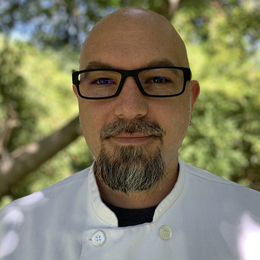Knowledge Base > Dan Marek - Ask Me Anything (Office Hours)

Dan Marek - Ask Me Anything (Office Hours)
This event was on
Tuesday, February 06, 2024 at 11:00 am Pacific, 2:00 pm Eastern
Join Chef Dan Marek in his virtual office as he welcomes all of your questions. This event was created for you and we encourage you to Ask Anything – from cooking techniques to cours… Read More.
Question:

On A Viking Gas stove that has Convection Roast, True Convection, Convection Bake and Bake. What is the difference between True Convection and Convection Roast?
— Dion Turner
Answer:
his is a great question and this is actually something that's come up a little more recently as they've been adding them. And I did actually post a link here too, so you can actually, um, go into that to get a little bit more detail. But more recently on, um, ovens, you'll find a variety of these different kind of, uh, convection. So a true, uh, uh, an American convection oven typically works, um, where there's a heating element on the bottom of your oven, and then there's a fan in the back of your oven. And that fan basically starts to rotate the air around inside of your oven. And it does it, you know, kind of at a medium pace basically. And what that's basically doing is, um, if you have a cold object in the, you know, a baking tray or something like that, that's actually cooling the air around the, um, the item itself. So if you're rotating the air around that, it's actually helping to heat it up quicker. Now, that's an American style, uh, convection, and that's kind of what has been, uh, you know, the standard in, um, ovens in America for quite some time now. If you look at like air fryers, it's kind of like a step up. It actually blows the air really, really fast on the inside of those little air fryers to be able to move the air around quickly on that and the using the same heating element. Now, a true convection, um, is something that's actually more used, used in Europe, but it's actually started to find its way, um, into the, uh, into the states. And on those functions, um, it's actually a little bit of a slower, uh, rotation of the air on the inside, but it is using the heating element that's on the bottom of the oven, but also the heating elements at the top of the oven, which is typically used for, um, doing a broil function. So the heat coming down from the top. So you're still getting both functions of heat on the top and the bottom of it, but the true con convention is actually moving the air between those two elements as well. But you're using both of the heating elements instead of just one of them. So, uh, the difference basically between true convection and a convection roast is a different thing because convection roast is a function that actually moves it slower, but it also helps to help kind of, uh, like you use it on meats a lot more, I guess, where you can actually, uh, you know, get a kind of a harder outside, uh, um, and keep the inside a little bit softer as well. So a lot of different, um, you know, convection out there. Unfortunately, there isn't like a standard like this is always the way it is, but generally, um, that is kind of the, the different versions of them. The convection, true convection, convection bake, and then the regular bake is just having the heating element from the bottom. So, um, couple different ways to be able to, to use those. Um, you know, some recipes will call for them, but not many do because not everybody has a true convection. Um, you know, versus convection, just remember that when you are using those convection functions with the air circulating like that, that you're, uh, whatever you're cooking will typically cook a little faster than it would on just your normal baking process because it is actually moving that air and keeping it, um, keeping it hot quicker as well. So if you want more detail on that, there's about six pages of notes on that, on the link that I put on this through Simply Recipes. It's actually a great little article on the topic, um, and I'm sure you'll learn something from it.